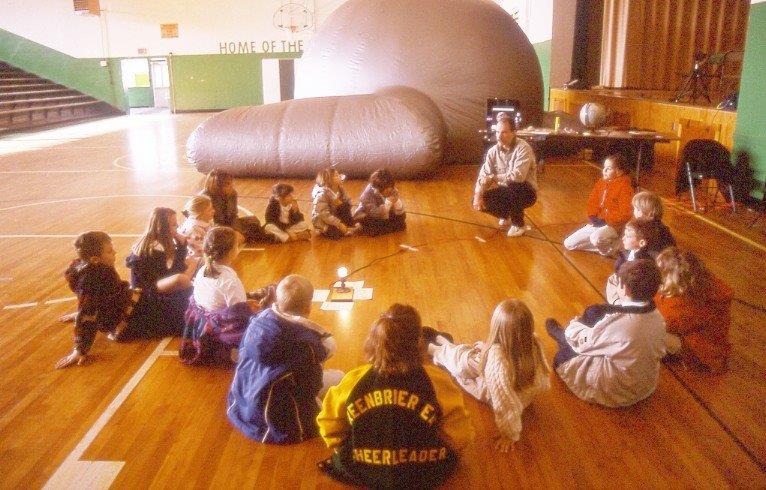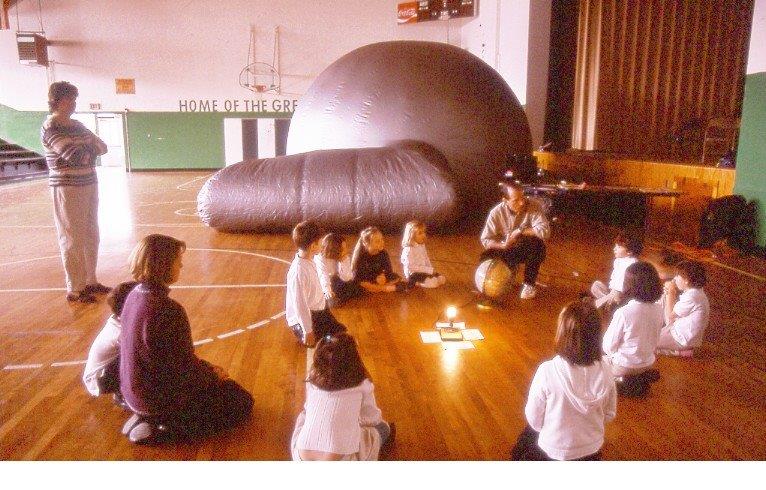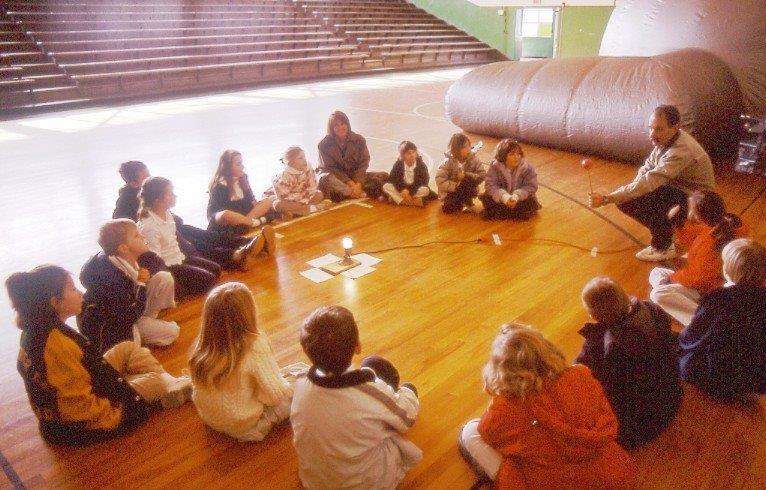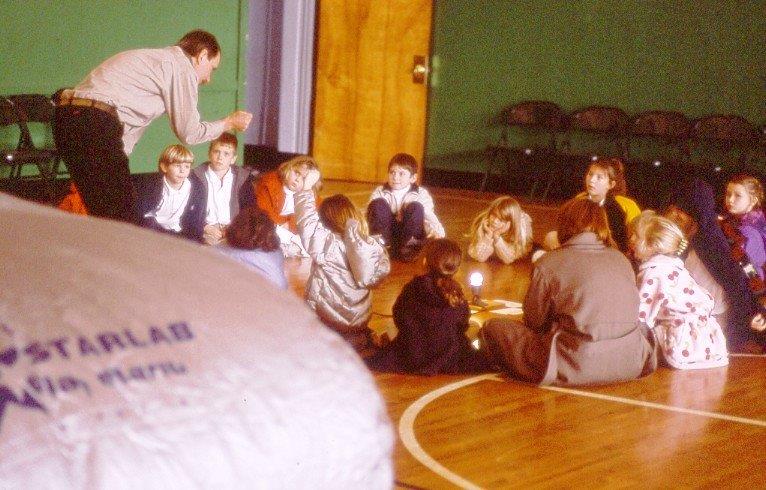Due to Covid-19 and other factors Dave is not accepting
any reservations for astronomy shows until further notice
STARLAB

The Starlab is certainly one of the best teaching tools I have ever used. If you have a quiet, comfortable, indoor space with an eleven foot ceiling for the inflated dome I can simulate Earth’s night sky for any night of the year from anywhere in the northern hemisphere. I have given over 150 one hour Starlab shows to people of all ages.


Using visual props I generally spend about 20 minutes before entering the Starlab showing younger students how the daily spin of the Earth creates the illusion that Sun and stars are circling overhead. There is a brief discussion of stars properties, their lifespan, their size compared to Earth, and the astounding numbers of stars that populate our Milky Way Galaxy. I try to convey a sense of the scale involved when we look out at our immense Universe and the distances that separate stars.
Once inside the Starlab, beginning with the star cylinder we learn how to orient ourselves to the four directions and watch how the sky changes over time. Several easy to locate major constellations are then identified and discussed. The different colors of stars, their life cycles, and importance are explored.
For younger children or anyone having difficulty with the standard star cylinder I can quickly switch over to the Greek Mythology cylinder that boldly outlines the constellations and becomes a platform for the wealth of stories and Greek myths that help explain the patterns we see in the celestial sphere. The Native American Indian cylinder projects the constellations as the Indians saw them and offers alternative patterns. Many stories accompany them.
Other cylinders available highlight the ecliptic plane of the Sun, Moon, and Planets and showcase the zodiac constellations. What sign are you? What is happening on Earth during that month?
Although the Starlab comfortably holds only about 25 at a time shows can be scheduled hourly to allow up to 150 students per day.
Stunning videotapes from the world’s best telescopes can be played on monitors in another adjacent area to entertain those waiting for the next Starlab show to begin.
Note: Starlab must be reserved in advance to assure availability.


MORE STARLAB PICS
HOME